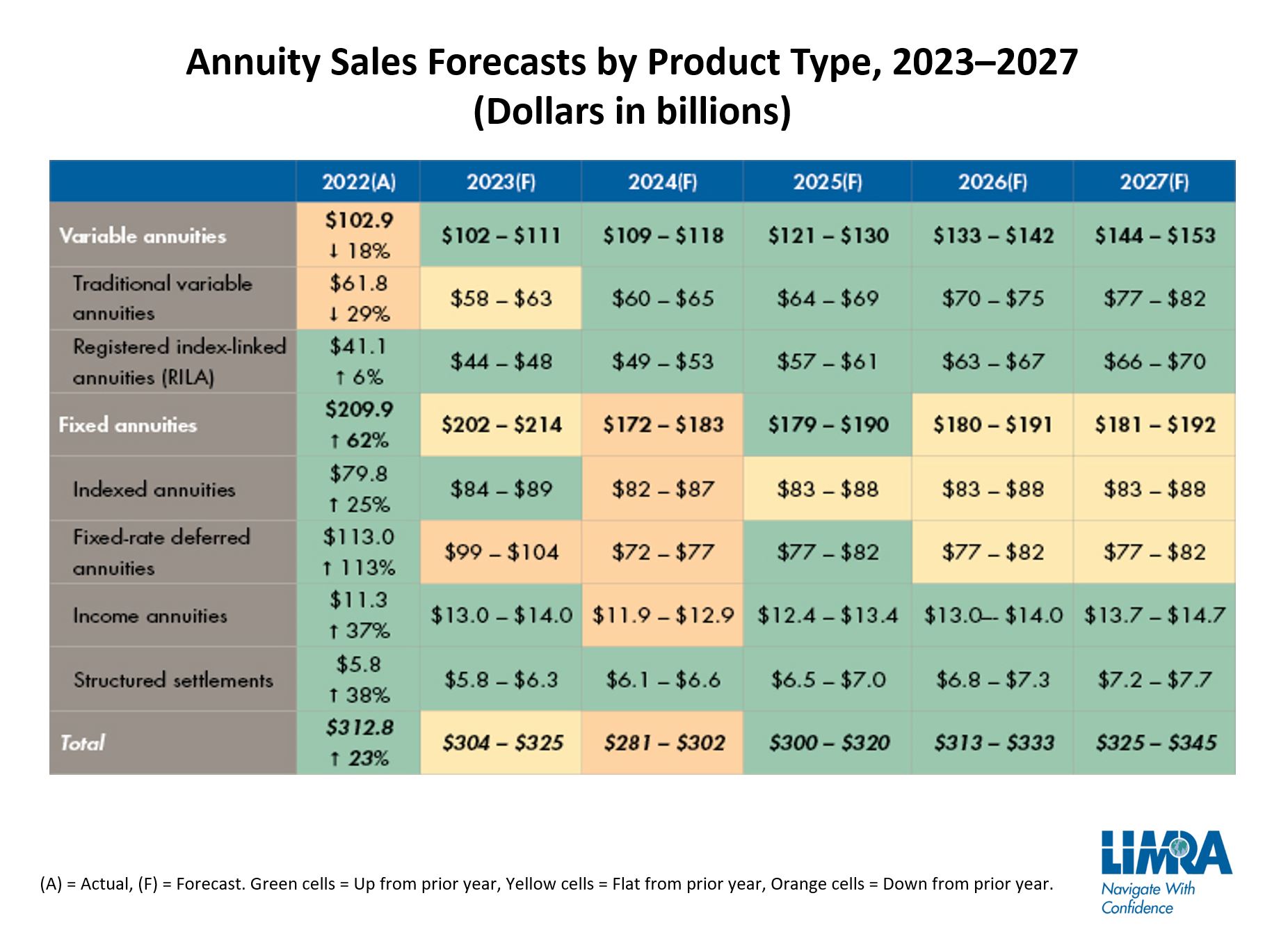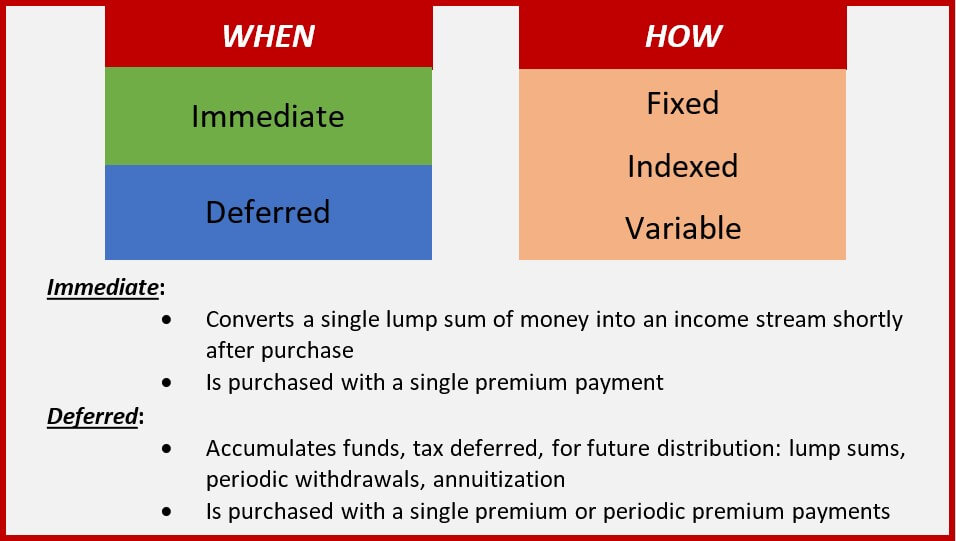Featured
Table of Contents
There are three kinds of annuities: fixed, variable and indexed. With a dealt with annuity, the insurance business guarantees both the price of return (the rate of interest price) and the payout to the investor.
With a deferred set annuity, the insurance provider agrees to pay you no much less than a specified interest rate as your account is expanding. With a prompt set annuityor when you "annuitize" your delayed annuityyou obtain a predetermined set quantity of money, usually on a month-to-month basis (similar to a pension).
While a variable annuity has the advantage of tax-deferred development, its yearly costs are most likely to be much greater than the costs of a regular common fund. And, unlike a repaired annuity, variable annuities don't provide any type of guarantee that you'll make a return on your financial investment. Rather, there's a danger that you might really shed cash.
Highlighting Tax Benefits Of Fixed Vs Variable Annuities A Comprehensive Guide to Investment Choices What Is Annuity Fixed Vs Variable? Advantages and Disadvantages of Indexed Annuity Vs Fixed Annuity Why Annuities Fixed Vs Variable Is a Smart Choice How to Compare Different Investment Plans: Simplified Key Differences Between Different Financial Strategies Understanding the Rewards of Variable Vs Fixed Annuity Who Should Consider Indexed Annuity Vs Fixed Annuity? Tips for Choosing the Best Investment Strategy FAQs About Planning Your Financial Future Common Mistakes to Avoid When Planning Your Retirement Financial Planning Simplified: Understanding Your Options A Beginner’s Guide to What Is A Variable Annuity Vs A Fixed Annuity A Closer Look at How to Build a Retirement Plan
Due to the intricacy of variable annuities, they're a leading source of capitalist grievances to FINRA. Before purchasing a variable annuity, thoroughly checked out the annuity's program, and ask the person selling the annuity to describe all of the product's functions, bikers, costs and constraints. You ought to likewise understand exactly how your broker is being compensated, consisting of whether they're getting a compensation and, if so, exactly how much.
Indexed annuities are complicated economic tools that have attributes of both repaired and variable annuities. Indexed annuities typically offer a minimal surefire rates of interest incorporated with a passion price connected to a market index. Numerous indexed annuities are tied to broad, popular indexes like the S&P 500 Index. However some use other indexes, including those that represent other segments of the market.
Comprehending the attributes of an indexed annuity can be complicated. There are a number of indexing approaches companies utilize to compute gains and, due to the selection and intricacy of the methods used to debt rate of interest, it's tough to contrast one indexed annuity to one more. Indexed annuities are normally classified as one of the complying with two kinds: EIAs use a guaranteed minimum interest price (normally at the very least 87.5 percent of the costs paid at 1 to 3 percent rate of interest), in addition to an extra rates of interest tied to the efficiency of one or even more market index.

Traditional investors who value safety and stability. Those nearing retirement who intend to shelter their possessions from the volatility of the supply or bond market. With variable annuities, you can spend in a selection of safety and securities consisting of stock and mutual fund. Stock exchange efficiency determines the annuity's value and the return you will certainly obtain from the cash you spend.
Comfy with fluctuations in the securities market and want your financial investments to maintain speed with rising cost of living over a lengthy period of time. Youthful and wish to prepare economically for retired life by enjoying the gains in the stock or bond market over the long term.
As you're developing up your retirement savings, there are several ways to stretch your cash. can be specifically useful financial savings devices due to the fact that they guarantee a revenue quantity for either a set time period or for the remainder of your life. Fixed and variable annuities are two options that supply tax-deferred growth on your contributionsthough they do it in various methods.
Analyzing Strategic Retirement Planning Key Insights on Your Financial Future What Is Fixed Income Annuity Vs Variable Growth Annuity? Advantages and Disadvantages of Different Retirement Plans Why Annuity Fixed Vs Variable Matters for Retirement Planning Variable Annuity Vs Fixed Indexed Annuity: Simplified Key Differences Between Different Financial Strategies Understanding the Rewards of Long-Term Investments Who Should Consider Strategic Financial Planning? Tips for Choosing Fixed Interest Annuity Vs Variable Investment Annuity FAQs About Planning Your Financial Future Common Mistakes to Avoid When Choosing a Financial Strategy Financial Planning Simplified: Understanding Your Options A Beginner’s Guide to Smart Investment Decisions A Closer Look at How to Build a Retirement Plan
An offers a surefire interest price. Your contract value will increase due to the amassing of guaranteed interest incomes, suggesting it won't lose value if the market experiences losses.
Your variable annuity's investment efficiency will affect the dimension of your nest egg. When you start taking annuity settlements, they will depend on the annuity worth at that time.
Market losses likely will result in smaller payments. Any kind of rate of interest or other gains in either kind of contract are protected from current-year tax; your tax liability will certainly come when withdrawals begin. Let's consider the core functions of these annuities so you can decide just how one or both might fit with your general retired life method.

A fixed annuity's worth will not decrease due to market lossesit's constant and steady. On the other hand, variable annuity worths will rise and fall with the efficiency of the subaccounts you elect as the marketplaces fluctuate. Revenues on your dealt with annuity will highly rely on its acquired rate when acquired.
On the other hand, payout on a dealt with annuity bought when passion prices are low are most likely to pay revenues at a reduced rate. If the rate of interest is ensured for the length of the agreement, earnings will continue to be continuous no matter of the marketplaces or rate task. A set rate does not mean that dealt with annuities are safe.
While you can't land on a fixed rate with a variable annuity, you can pick to spend in traditional or hostile funds tailored to your threat level. More conventional financial investment choices, such as temporary bond funds, can assist minimize volatility in your account. Since dealt with annuities offer an established rate, dependent upon present rate of interest prices, they do not use that exact same versatility.
Breaking Down Your Investment Choices A Comprehensive Guide to Variable Annuity Vs Fixed Annuity Defining Variable Annuities Vs Fixed Annuities Pros and Cons of Retirement Income Fixed Vs Variable Annuity Why Choosing the Right Financial Strategy Matters for Retirement Planning How to Compare Different Investment Plans: A Complete Overview Key Differences Between Different Financial Strategies Understanding the Key Features of Variable Annuities Vs Fixed Annuities Who Should Consider Strategic Financial Planning? Tips for Choosing What Is Variable Annuity Vs Fixed Annuity FAQs About Planning Your Financial Future Common Mistakes to Avoid When Planning Your Retirement Financial Planning Simplified: Understanding Annuities Fixed Vs Variable A Beginner’s Guide to Variable Annuities Vs Fixed Annuities A Closer Look at How to Build a Retirement Plan

You potentially can gain more long term by taking additional risk with a variable annuity, but you might also lose cash. While taken care of annuity agreements prevent market risk, their trade-off is less growth possibility.
Investing your variable annuity in equity funds will supply even more prospective for gains. The fees connected with variable annuities might be greater than for other annuities. Financial investment options, survivor benefit, and optional benefit guarantees that may grow your properties, additionally add cost. It's vital to assess attributes and associated charges to make sure that you're not spending more than you require to.
The insurance company might enforce abandonment fees, and the IRS might impose an early withdrawal tax obligation fine. They start at a specific percentage and then decline over time.
Annuity earnings go through a 10% very early withdrawal tax penalty if taken before you reach age 59 unless an exception applies. This is imposed by the IRS and puts on all annuities. Both taken care of and variable annuities supply choices for annuitizing your balance and transforming it right into an assured stream of lifetime revenue.
Analyzing Strategic Retirement Planning Everything You Need to Know About Financial Strategies Defining the Right Financial Strategy Advantages and Disadvantages of Fixed Index Annuity Vs Variable Annuities Why Choosing the Right Financial Strategy Is a Smart Choice How to Compare Different Investment Plans: How It Works Key Differences Between Different Financial Strategies Understanding the Risks of Long-Term Investments Who Should Consider Strategic Financial Planning? Tips for Choosing the Best Investment Strategy FAQs About Planning Your Financial Future Common Mistakes to Avoid When Choosing Variable Vs Fixed Annuity Financial Planning Simplified: Understanding Retirement Income Fixed Vs Variable Annuity A Beginner’s Guide to Variable Vs Fixed Annuity A Closer Look at Annuities Variable Vs Fixed
You may decide to utilize both repaired and variable annuities. If you're selecting one over the other, the differences matter: A may be a far better alternative than a variable annuity if you have a more conservative danger tolerance and you seek predictable rate of interest and major security. A might be a far better alternative if you have a higher danger tolerance and want the potential for long-term market-based development.
There are different kinds of annuities that are made to offer different objectives. A set annuity guarantees repayment of a collection quantity for the term of the arrangement.
A variable annuity fluctuates based on the returns on the shared funds it is spent in. An immediate annuity begins paying out as soon as the customer makes a lump-sum repayment to the insurer.
Annuities' returns can be either taken care of or variable. With a fixed annuity, the insurance business ensures the purchaser a specific repayment at some future day.
Table of Contents
Latest Posts
Highlighting the Key Features of Long-Term Investments Key Insights on Annuities Fixed Vs Variable Defining the Right Financial Strategy Benefits of Choosing the Right Financial Plan Why Choosing the
Understanding Deferred Annuity Vs Variable Annuity A Comprehensive Guide to Investment Choices Defining Fixed Vs Variable Annuity Pros And Cons Advantages and Disadvantages of Different Retirement Pla
Exploring the Basics of Retirement Options A Comprehensive Guide to Retirement Income Fixed Vs Variable Annuity What Is the Best Retirement Option? Features of What Is Variable Annuity Vs Fixed Annuit
More
Latest Posts